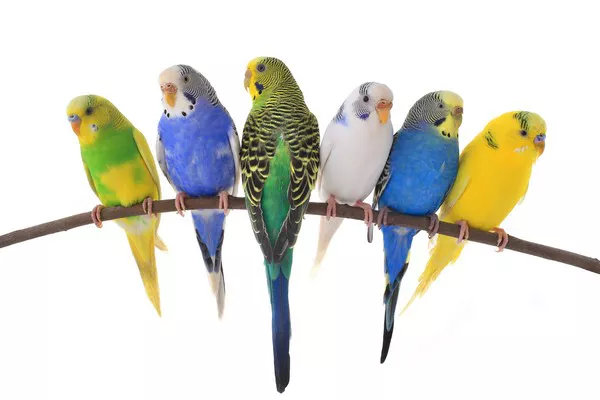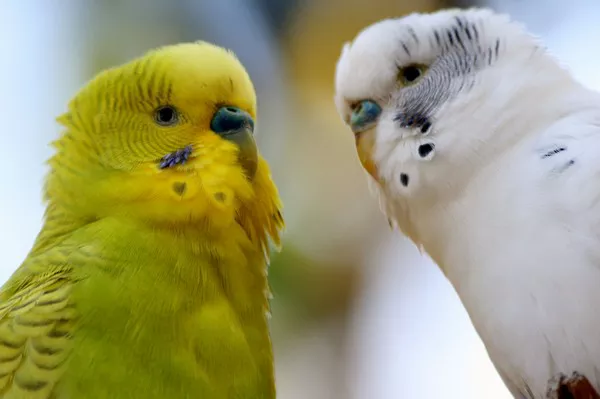The Sun Conure (Aratinga solstitialis), often recognized by its vibrant plumage and friendly demeanor, is a beloved species among bird enthusiasts. Its stunning combination of golden-yellow, orange, and green feathers, paired with its playful personality, makes it one of the most attractive and popular parrots in aviculture. However, there is growing concern over the conservation status of the Sun Conure in the wild. In this article, we will explore the question: Is the Sun Conure endangered? We will delve into the bird’s natural habitat, behavior, threats it faces, and the efforts being made to protect it.
1. Understanding the Sun Conure
Before discussing the conservation status of the Sun Conure, it is important to understand the bird itself. Native to the northeastern parts of South America, particularly in countries like Brazil, Venezuela, and Guyana, the Sun Conure is a medium-sized parrot known for its lively nature and striking coloration. These birds are part of the Aratinga genus, which also includes other colorful conures, such as the Green-cheeked Conure and the Blue-crowned Conure.
Sun Conures typically grow to about 12 inches in length and weigh around 100 grams. Their feathers are a bright blend of yellow, orange, and green, with a blueish-green tail and wings. They have a relatively long lifespan for a parrot, living up to 30 years in captivity when properly cared for. The Sun Conure is known for its social and playful nature, often mimicking human speech and making a variety of vocalizations, including squawks and whistles.
In the wild, these birds are often found in flocks, where they engage in social behaviors such as communal foraging, preening, and vocalizing. They are highly intelligent, and in captivity, they are known to form strong bonds with their human caretakers. These traits, combined with their beautiful plumage, make them a popular choice as pets.
2. The Natural Habitat of the Sun Conure
Sun Conures are typically found in the tropical and subtropical forests, savannas, and open woodlands of northeastern South America. Their primary habitat includes areas with a mix of trees, shrubs, and open spaces, providing both shelter and access to food. They are especially found in regions with abundant fruiting trees, which are vital to their diet.
In the wild, Sun Conures are often seen flying in flocks, seeking out food, and interacting with other members of their species. These flocks can sometimes number in the hundreds of birds. The birds’ diet mainly consists of fruits, nuts, seeds, berries, and flowers. This diet is essential for their survival, as it provides them with the necessary nutrients for energy and overall health. They are also known to be opportunistic feeders, foraging in agricultural areas and taking advantage of human crops when available.
While Sun Conures are primarily found in forests and wooded areas, they can adapt to different types of environments. They can also be seen in semi-arid regions, as long as there is an adequate supply of food and shelter. However, like many tropical species, the Sun Conure’s habitat is under threat due to deforestation and the encroachment of human activity.
3. Threats to the Sun Conure’s Population
The population of Sun Conures is facing several challenges, which have led to concerns about their conservation status. The main threats to their survival include habitat destruction, the illegal pet trade, and the fragmentation of their natural environment. Let’s look at these factors in more detail:
Habitat Destruction
One of the most significant threats to the Sun Conure is the destruction of its natural habitat. As tropical forests are cleared for agriculture, logging, and urban expansion, the birds lose their homes. Deforestation in South America, particularly in Brazil and Venezuela, has significantly reduced the available habitat for Sun Conures. This habitat loss has led to the fragmentation of their populations, making it difficult for the birds to find suitable nesting sites and access to food.
The loss of trees also has direct consequences on the Sun Conure’s ability to find the fruits, seeds, and nuts they rely on for nourishment. Without adequate food sources, their chances of survival decrease. The lack of suitable nesting sites due to deforestation also increases the likelihood of these birds being displaced or losing their breeding grounds.
Illegal Pet Trade
The Sun Conure is a highly sought-after bird in the exotic pet trade due to its striking appearance and sociable nature. Unfortunately, the demand for these birds as pets has led to illegal trapping and smuggling. Wild-caught Sun Conures are often sold to pet owners, both locally and internationally, for a high price.
The capture of wild Sun Conures for the pet trade has had a devastating impact on their populations. Trapping can result in the death of birds during the capture process, and those that survive face challenges in adjusting to captivity. The removal of adult birds from the wild disrupts breeding patterns and weakens the genetic diversity of the species. Moreover, the illegal pet trade contributes to the decline of Sun Conure populations by taking individuals from the wild, making it more difficult for them to reproduce and sustain healthy populations.
Climate Change
Like many other species, Sun Conures are also vulnerable to the effects of climate change. Changes in temperature, rainfall patterns, and the availability of food sources can disrupt the delicate balance of their habitat. For instance, prolonged droughts or heavy rains could affect the availability of fruit and seeds, directly impacting the bird’s ability to survive. Additionally, climate change can exacerbate habitat destruction by altering the structure of the forests where Sun Conures live.
4. Conservation Status of the Sun Conure
Due to the combined threats of habitat destruction, illegal trapping, and climate change, the Sun Conure’s population has declined in the wild. The International Union for Conservation of Nature (IUCN) has classified the Sun Conure as “Endangered” on its Red List of Threatened Species. This designation means that the bird faces a high risk of extinction in the wild if conservation efforts are not implemented.
The decline of the Sun Conure’s population is a cause for concern, as the species is considered to be highly vulnerable to extinction. While the exact population size is difficult to estimate, studies suggest that the wild population has decreased by more than 50% over the past few decades.
5. Conservation Efforts to Protect the Sun Conure
Despite the challenges faced by the Sun Conure, several conservation efforts are underway to protect the species and help restore its population in the wild. These efforts include habitat protection, breeding programs, and education and advocacy to raise awareness about the importance of conservation.
Habitat Protection
One of the most effective ways to protect the Sun Conure is through habitat conservation. Many organizations are working to protect the tropical forests and woodlands where these birds live. Governments in South American countries are increasingly recognizing the importance of preserving biodiversity, and they are implementing policies to protect critical habitats from deforestation.
For example, the establishment of protected areas and national parks can provide safe havens for Sun Conures and other endangered species. These protected areas help to ensure that the birds have access to suitable nesting sites and food sources. In some areas, reforestation projects are being launched to restore degraded habitats and create new homes for Sun Conures.
Captive Breeding Programs
In addition to habitat protection, captive breeding programs are being used to help bolster the Sun Conure population. These programs involve breeding Sun Conures in controlled environments, such as zoos and avian sanctuaries, and then releasing them into the wild when they reach maturity.
Captive breeding can help increase the number of birds in the wild and ensure genetic diversity within the population. However, it is important that these efforts are accompanied by habitat restoration and anti-poaching measures to ensure that the released birds can thrive in their natural environment.
Combatting the Illegal Pet Trade
Another critical aspect of Sun Conure conservation is addressing the illegal pet trade. Governments, conservation organizations, and law enforcement agencies are working together to combat the illegal trapping and trade of Sun Conures. By enforcing laws that protect wildlife and cracking down on illegal trade, it is possible to reduce the number of wild birds being removed from their habitats.
Public awareness campaigns are also essential in reducing the demand for wild-caught Sun Conures as pets. Educating potential pet owners about the ethical implications of owning wild-caught birds can help discourage the purchase of Sun Conures from illegal sources. In many countries, the sale and importation of wild-caught birds are now banned, which helps protect the species from further exploitation.
6. What Can We Do to Help?
While conservation efforts are underway, individuals can also play a role in helping to protect the Sun Conure. Here are some actions that can make a difference:
Support conservation organizations: Many non-profit organizations are dedicated to protecting endangered species like the Sun Conure. Donating to these organizations can help fund habitat protection, breeding programs, and other conservation initiatives.
Avoid purchasing wild-caught birds: If you are interested in owning a Sun Conure, ensure that you purchase it from a reputable breeder who practices ethical breeding methods. Avoid purchasing birds from illegal sources, as this perpetuates the exploitation of wild populations.
Raise awareness: Sharing information about the Sun Conure and its endangered status can help raise awareness about the need for conservation. Educating others about the importance of protecting wildlife and their habitats can lead to greater support for conservation efforts.
Conclusion
The Sun Conure, with its vibrant colors and sociable personality, is a bird that captures the hearts of many. However, the species is currently facing serious threats due to habitat loss, the illegal pet trade, and climate change. The Sun Conure is classified as “Endangered” by the IUCN, and if we do not act to protect it, we risk losing this beautiful bird from the wild forever.
Through a combination of habitat protection, captive breeding programs, and efforts to combat illegal trade, there is hope for the Sun Conure. By supporting these efforts and raising awareness, we can all play a part in helping to secure a future for this incredible species. Together, we can ensure that the Sun Conure continues to thrive in its natural habitat for generations to come.
Related Topics:


















